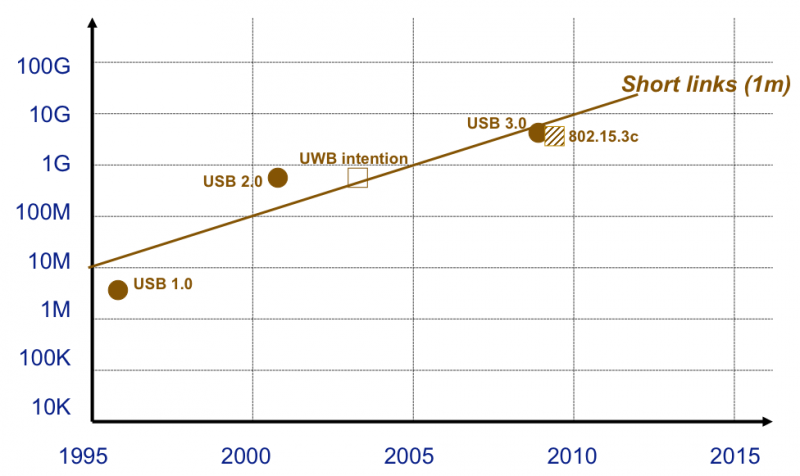Difference between revisions of "D2-Short Range Systems"
From its-wiki.no
Josef.Noll (Talk | contribs) |
Josef.Noll (Talk | contribs) (→Test yourself, answer these questions) |
||
| Line 25: | Line 25: | ||
{{:Comparison_of_Wireless_Protocols}} | {{:Comparison_of_Wireless_Protocols}} | ||
| + | |||
| + | = References = | ||
| + | by Thomas Aasebø: | ||
| + | * [http://ntnu.diva-portal.org/smash/get/diva2:445810/FULLTEXT01 Concurrent operation of Bluetooth low energy and ANT wireless protocols with an embedded controller] | ||
| + | * [http://search.ebscohost.com/login.aspx?direct=true&db=afh&AN=17146879&site=ehost-live ZigBee and Bluetooth strengths and weaknesses for industrial applications] | ||
| + | * [http://www.sciencedirect.com/science/article/pii/S0140366406004749 Wireless sensor networks: A survey on the state of the art and the 802.15.4 and ZigBee standards] | ||
| + | * [http://hj.diva-portal.org/smash/get/diva2:504164/FULLTEXT03 An ANT based Wireless Body Sensor Biofeedback Network for Medical E-Health Care] | ||
| + | * [http://domino.watson.ibm.com/library/cyberdig.nsf/papers/8934585FFADAD4A885256AA000700E03/$File/RC22109.pdf An Overview of the Bluetooth Wireless Technology] | ||
| + | * [http://www.mdpi.com/1424-8220/12/9/11734/pdf Overview and Evaluation of Bluetooth Low Energy: An Emerging Low-Power Wireless Technology] | ||
| + | * [http://www.springer.com/engineering/signals/book/978-1-4614-2172-6 Book: Low-Power Wireless Sensor Networks] | ||
| + | * [http://www.springerlink.com/content/l62854x2hm5p1775/fulltext.pdf Book: Low-powerWireless Sensor Network Platforms] | ||
| + | |||
= Test yourself, answer these questions= | = Test yourself, answer these questions= | ||
Revision as of 20:55, 21 September 2014
| Wiki for ITS | ||||||
|---|---|---|---|---|---|---|
|
Contents
⌘ Short range communication
Short range communication systems covers both industrial and end-customer applications, and is often used for sensor communications.
Presentations from earlier years
Wireless HART, ++ISO100
- Media:HART_ISO100.pdf (by Johan Tresvig)
- Book: WirelessHART - Applying wireless technology in real-time industrial process control
- Media:A Comparison of WirelessHART and ZigBee for Industrial Applications.pdf
- Media:A Location-determination Application in WirelessHART.pdf
- Media:Comparison of Industrial WSN Standards.pdf
- Media:WirelessHART - Applying wireless technology in real-time industrial process control.pdf
see also earlier lecture WiMAX_and_WirelessHART
- Wireless HART Overview: Media:HART_overview.pdf
⌘ USB speed
[Presentation G. Fettweis, IEEE VTC forum Baltimore], http://www.ieeevtc.org/plenaries/vtc2007fall/28.pdf
⌘ Wireless follows wired in speed
| |
ANT |
Bluetooth (v1.x, v2.x --> 3.x) |
Bluetooth low power |
ZigBee |
|---|---|---|---|---|
| Frequency |
2.4 GHz |
2.4 GHz |
2.4 GHz |
2.4 GHz, 915 MHz, 868 MHz |
| Modulation |
GFSK |
GFSK |
GFSK (almost GMSK) |
O-QPSK, BPSK, BPSK |
| RF Raw Data Rate |
1 Mbps | 1 Mbps, 3 Mbps |
1 Mbps |
250 Kbps, 40 Kbps, 20 Kbps |
| Application Throughput | 20 Kbps | 0.7 Kbps, 2.1 Kbps | 305 Kbps | 10-115.2 Kbps |
| Max Range | 30 m | 100 m | 50 m | 100 m |
| Frequency Channels |
125 |
79 |
40 |
16, 10, 1 |
| Supported Network Types |
Star, Peer-to-Peer |
Peer-to-Peer, scatternet |
Star, Peer-to-Peer |
Star, Peer-to-Peer |
References
by Thomas Aasebø:
- Concurrent operation of Bluetooth low energy and ANT wireless protocols with an embedded controller
- ZigBee and Bluetooth strengths and weaknesses for industrial applications
- Wireless sensor networks: A survey on the state of the art and the 802.15.4 and ZigBee standards
- An ANT based Wireless Body Sensor Biofeedback Network for Medical E-Health Care
- An Overview of the Bluetooth Wireless Technology
- Overview and Evaluation of Bluetooth Low Energy: An Emerging Low-Power Wireless Technology
- Book: Low-Power Wireless Sensor Networks
- Book: Low-powerWireless Sensor Network Platforms
Test yourself, answer these questions
- What is WirelessHART?
- What radio technology is used (WirelessHART)?
- What network topologies are supported (WirelessHART)?
- What are the main parts of a WiHART network?
- How does channel hopping work?
